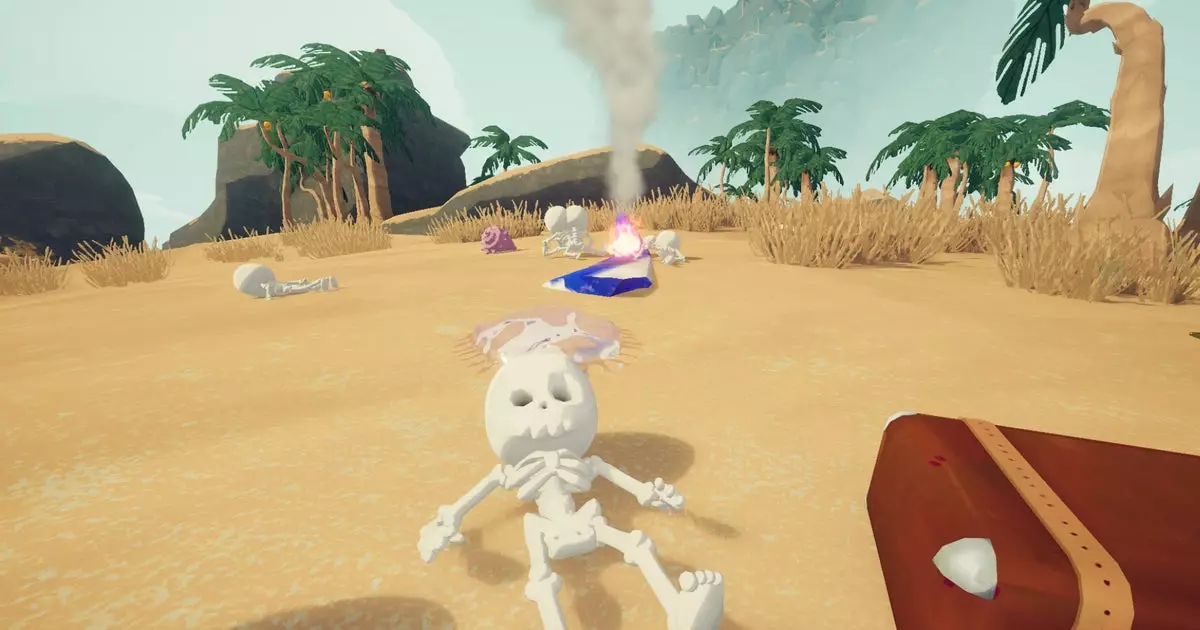In the expansive universe of cooperative climbing simulators, developers often strive to craft experiences that evoke awe, thrill, or camaraderie. Yet, some ventures dare to tread darker, more twisted terrains, flipping conventional notions of adventure on their head. Among these, the Everest mod for Peak stands out as a provocative reinvention—an unsettling yet fascinating twist that cultivates an eerie sense of interconnectedness through death. Rather than merely exploring lofty summits, players now face a landscape infused with the silent testament of those who have succumbed before them, fundamentally altering the tone and depth of multiplayer engagement.
This mod’s core innovation lies in its ability to visually narrate the often-unseen danger inherent in perilous expeditions. By scattering skeletal remains across treacherous routes—sometimes numbering in the tens of thousands—the game transforms into a virtual tapestry of fallen adventurers. Far from a simple aesthetic change, this feature functions as an interactive map of risk, where each skeleton marks a previous tragedy, encouraging players to consider their surroundings with renewed caution or curiosity. It turns death from an isolated consequence into a collective monument, binding players through shared failure rather than merely highlighting individual success or loss.
The Power of Collective Memory: Connecting Through Loss
What makes Everest’s skeletal landscapes profoundly impactful is its ability to forge a sense of community beyond life. In multiplayer settings, these bones serve as silent markers, whispering stories of those who dared and fell, creating a morbid yet compelling form of legacy. The mod’s creator emphasizes that these congregations of remains “potentially mark dangerous areas and connect adventurers in death,” suggesting a visceral link between the living and the dead—a collective consciousness woven through shared peril.
This concept elevates the moral weight of the game world by turning it into a living memorial of sorts. Encounters with skeletons—wordless yet expressive—may subtly warn players of impending danger, fostering caution and respect. Moreover, this shared spatial memory could inspire a new kind of gameplay strategy, where exploration is driven not only by odyssey but also by a consciousness of risk rooted in the echoes of those who failed before. It’s a form of storytelling that leans into the macabre, yet awakens a profound sense of connection in multiplayer dynamics.
Morbid Fun or Artistic Statement? The Ethical Dilemma
While the technical achievement of populating a game world with skeletons is undeniable, questions of taste and ethics inevitably surface. Is it playful spookiness or a disturbing voyeurism? The contrasts are stark: on one hand, the mod can be viewed as a darkly humorous addition, akin to playful horror, injecting a twisted kind of fun into the game’s fabric. On the other, it risks trivializing mortality, turning death into a spectacle—something to gawk at or even collect.
Yet, from a critical perspective, this design choice forces players to confront mortality head-on, challenging sanitized notions of adventure and innocent fun. By visualizing death as an integral part of the journey, the mod invites reflection on the dangers inherent in daring exploration. It pushes players to question their own approach to risk—a reminder that behind every summit lies the potential for tragedy, often ignored or romanticized in mainstream gaming.
Technical Ingenuity and Interactivity
Behind the audacious concept lies a thoughtful implementation. The mod includes customizable configuration files, allowing players to tailor the density of skeletons, notification frequency, or even disable the feature altogether. This adaptability ensures a broad appeal, whether one seeks a spooky atmosphere or a more subdued experience. Furthermore, the mod requires the integration of specific frameworks like BepInEx and UniTask, reflecting a deeper layer of technical sophistication.
Such intricacy demonstrates that this is not merely a crude visual gag but a carefully crafted enhancement that embraces the “shared experience” idea. By acknowledging the importance of technical tools and providing user-friendly options, the creator fosters an environment where players can experiment and find their own balance between morbid novelty and gameplay integrity.
The Impact and Future Potential of Morbid Innovation
This Frankenstein’s monster of a modification exemplifies how even the most morbid ideas can push the boundaries of interactive entertainment. It challenges notions of what a multiplayer cooperative game can be—no longer purely about triumph over physical challenges, but about grappling with mortality and communal memory. It also sparks dialogue on the ethics of designing experiences that blur lines between fun and brutal reality.
Looking ahead, innovations like Everest’s skeletons could inspire other developers to explore similar themes—incorporating death, mortality, and shared vulnerability into diverse gaming genres. Whether it leads to more meaningful, reflective gameplay or remains a provocative novelty, the fundamental idea broadens our understanding of how virtual worlds can serve as mirrors—sometimes disturbing, sometimes enlightening—of our own human condition.


Leave a Reply